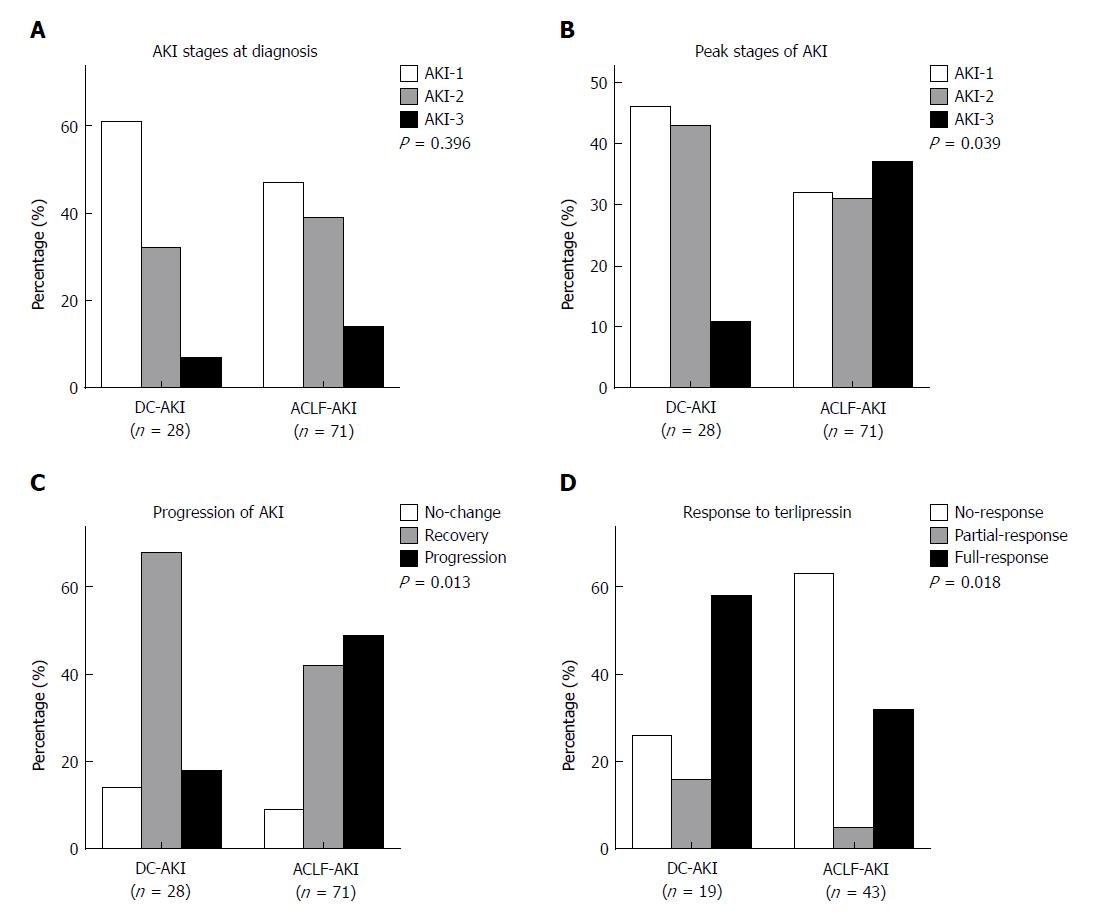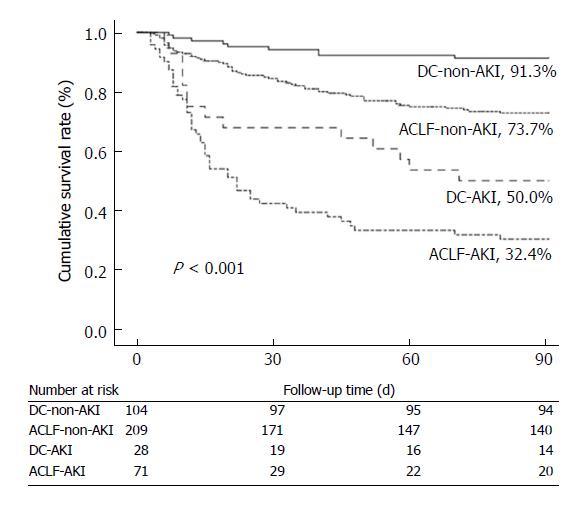Copyright
©The Author(s) 2018.
World J Gastroenterol. Jun 7, 2018; 24(21): 2300-2310
Published online Jun 7, 2018. doi: 10.3748/wjg.v24.i21.2300
Published online Jun 7, 2018. doi: 10.3748/wjg.v24.i21.2300
Figure 1 Box-plot of urinary tubular damage biomarkers levels in different groups.
A: Urinary NGAL; B: Urinary CysC; C: Urinary L-FABP; D: Urinary IL-18; E: Urinary KIM-1. The boxes in each graph represents the median (middle line), 25th percentile (bottom line) and 75th percentile (top line) values, whereas lower and upper whiskers represent data within1.5 IQR of the lower quartile and upper quartile, respectively. Circles represent outliers. Kruskal-Wallis test were used for all comparison and P < 0.05 were considered as have statistical significance, aP < 0.05, bP < 0.01, cP < 0.001. ACLF: Acute-on-chronic liver failure; DC: Decompensated cirrhosis; AKI: Acute kidney injury; CHB: Chronic hepatitis B; HC: Healthy controls; NGAL: Neutrophil gelatinase-associated lipocalin; CysC: Cystatin C; L-FABP: Liver-type fatty acid binding protein; IL-18: Interleukin-18; KIM-1: Kidney injury molecule-1.
Figure 2 Acute kidney injury staging, progression and the response to terlipressin in ACLF-AKI and DC-AKI patients.
A: AKI stages at diagnosis (P = 0.396); B: Peak stages of AKI (P = 0.039); C: Progression of AKI (P = 0.013); D: Patient’s response to terlipressin (P = 0.018). All analyses compared by fisher's exact test or chi-square test, P < 0.05 were considered as have statistically significant.
Figure 3 Kaplan-Meier curves shows the cumulative survival rates of acute-on-chronic liver failure and decompensated cirrhosis patients categorized accorrding to the presence of acute kidney injury.
Survival estimates were compared by log-rank test, P < 0.05 was considered statistically significant. ACLF: Acute-on-chronic liver failure; DC: Decompensated cirrhosis; AKI: Acute kidney injury.
- Citation: Jiang QQ, Han MF, Ma K, Chen G, Wan XY, Kilonzo SB, Wu WY, Wang YL, You J, Ning Q. Acute kidney injury in acute-on-chronic liver failure is different from in decompensated cirrhosis. World J Gastroenterol 2018; 24(21): 2300-2310
- URL: https://www.wjgnet.com/1007-9327/full/v24/i21/2300.htm
- DOI: https://dx.doi.org/10.3748/wjg.v24.i21.2300











